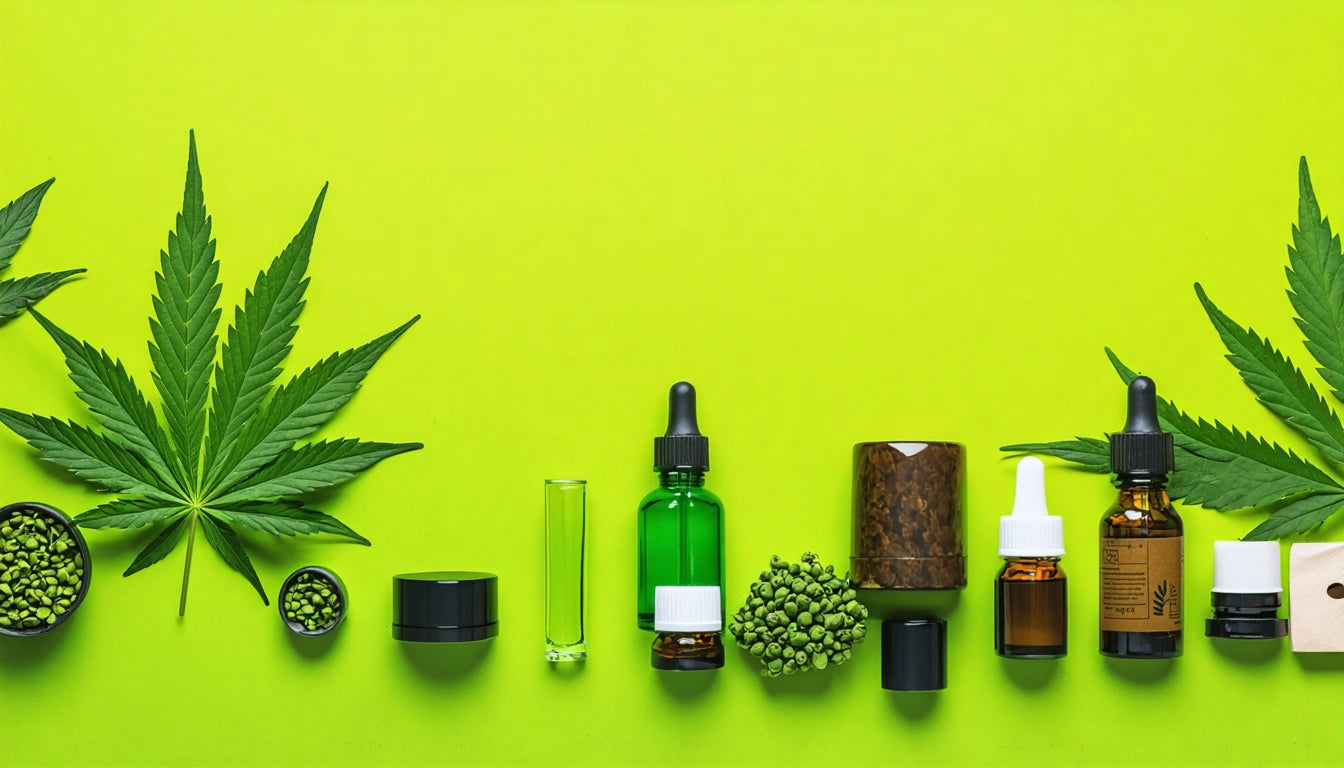Table of Contents
Cannabis concentrates represent one of the fastest-growing segments in the industry, offering potent alternatives to traditional flower. The creation of these concentrated products relies heavily on extraction methods that separate cannabinoids and terpenes from plant material. Understanding the differences between butane hash oil (BHO), COâ‚‚, and ethanol extraction helps producers and consumers make informed decisions about concentrate products.
Fundamentals of Solvent Extraction
Solvent extraction works by dissolving the desirable compounds from cannabis plant material using a chemical solvent. These compounds primarily include cannabinoids like THC and CBD, along with terpenes that provide flavor and aroma. Once dissolved, the solution undergoes purging processes to remove the solvent, leaving behind concentrated cannabis extract.
The choice of solvent significantly impacts the final product's characteristics, including potency, flavor profile, and consistency. Different solvents have varying abilities to extract specific compounds, making each method suitable for particular concentrate types.
Butane Hash Oil (BHO) Extraction
The BHO Process
BHO extraction uses liquefied butane as a solvent to strip cannabinoids and terpenes from plant material. The process typically involves packing cannabis into a tube and running butane through it. The butane dissolves the trichomes, carrying them into a collection vessel.
After collection, the butane-cannabis solution undergoes purging through heat and vacuum to remove residual solvents. This process can be tailored to create various consistencies, from shatter to budder to crumble, each with distinct characteristics.
Advantages and Limitations
BHO extraction offers several benefits, including high efficiency in terpene preservation, resulting in flavorful concentrates. It's also relatively quick compared to other methods. However, safety concerns exist due to butane's flammability, requiring specialized equipment and training.
Residual solvent testing is crucial for BHO products to ensure they're safe for consumption. State regulations typically limit residual butane to very low parts per million (ppm) in final products.
COâ‚‚ Extraction Technology
Supercritical and Subcritical Methods
COâ‚‚ extraction utilizes carbon dioxide in supercritical or subcritical states as a solvent. In the supercritical state, COâ‚‚ behaves both as a liquid and gas, allowing it to efficiently penetrate plant material and dissolve cannabinoids and terpenes.
Subcritical extraction operates at lower temperatures and pressures, preserving more temperature-sensitive compounds but yielding less extract. Many commercial operations use a combination of both methods to maximize both quality and quantity.
Benefits of COâ‚‚ Extraction
COâ‚‚ extraction offers several advantages, including:
- Environmental friendliness (COâ‚‚ is recyclable within the system)
- No residual solvent concerns (COâ‚‚ naturally dissipates)
- Precise control over extraction parameters
- Ability to target specific compounds through pressure and temperature adjustments
These benefits make COâ‚‚ extraction particularly valuable for medical cannabis applications where purity and consistency are paramount.
Ethanol Extraction Process
Cold and Warm Ethanol Methods
Ethanol extraction can be performed at various temperatures, with cold ethanol (cryogenic) extraction being most common for cannabis. The process involves soaking plant material in cold ethanol, which dissolves cannabinoids and terpenes.
The solution is then filtered to remove plant matter, followed by ethanol removal through evaporation or distillation. The temperature used significantly impacts what compounds are extracted, with colder temperatures reducing chlorophyll extraction.
Scaling and Efficiency
Ethanol extraction shines in commercial settings due to its scalability and efficiency. Large volumes of cannabis can be processed quickly, making it cost-effective for mass production. Additionally, ethanol is generally recognized as safe (GRAS) by the FDA, simplifying regulatory compliance.
The versatility of ethanol-extracted oil makes it suitable for various end products, from vape cartridges to tinctures and edibles. For those interested in using concentrates in edibles, ethanol extracts often provide a clean-tasting option.
Comparing Extraction Methods
Each extraction method offers distinct advantages and limitations:
| Method | Terpene Preservation | Initial Cost | Safety Concerns | Scalability |
|---|---|---|---|---|
| BHO | High | Medium | High | Medium |
| COâ‚‚ | Medium | Very High | Low | High |
| Ethanol | Medium-Low | Medium-High | Medium | Very High |
The choice between methods often depends on the desired end product, scale of operation, and budget constraints. Many commercial producers utilize multiple extraction methods to create diverse product lines.
Safety Considerations and Best Practices
Safety remains paramount in solvent extraction. Professional facilities implement numerous safeguards:
- Closed-loop systems to prevent solvent leakage
- Explosion-proof equipment and electrical systems
- Proper ventilation and gas detection
- Rigorous standard operating procedures
- Third-party testing for residual solvents
Home extraction using solvents is dangerous and illegal in most jurisdictions. Consumers should only purchase products from licensed manufacturers who follow strict safety protocols and provide clear labeling with test results.
Storage and Preservation of Solvent Extracts
Proper storage is essential for maintaining concentrate quality. Exposure to heat, light, and air degrades cannabinoids and terpenes over time. For optimal preservation, concentrates should be stored in airtight, light-resistant containers in cool environments.
Many producers use specialized child-resistant containers with airtight lids that help maintain product freshness while meeting compliance requirements. These storage solutions prevent terpene evaporation and oxidation, preserving the concentrate's potency and flavor profile.
For additional guidance on maintaining extract quality, explore these storage tips for preserving flavor and potency.
Future of Solvent Extraction Technology
The cannabis extraction landscape continues to evolve with several emerging trends:
- Hybrid extraction systems combining multiple solvents for optimized results
- Automated systems reducing human error and improving consistency
- Enhanced post-processing techniques for specific cannabinoid isolation
- Growing focus on solventless alternatives alongside traditional methods
As regulations mature and consumer preferences evolve, extraction technology will likely continue advancing toward greater efficiency, safety, and product customization. The distinction between solvent and solventless concentrates may become more nuanced as new technologies emerge.
Understanding these extraction methods helps both producers and consumers navigate the complex world of cannabis concentrates, making informed decisions about production methods, product selection, and consumption techniques.











Leave a comment
All comments are moderated before being published.
This site is protected by hCaptcha and the hCaptcha Privacy Policy and Terms of Service apply.